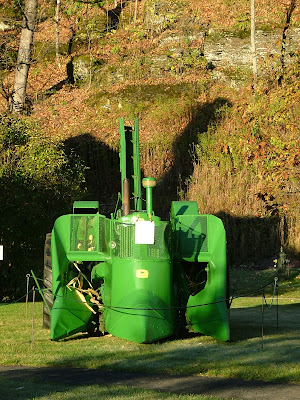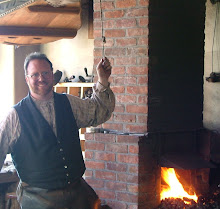Recently, the seed roller was brought to the shop by our ox team Jigs and Buckwheat. It had a broken metal bracket. We removed the bracket and began repairs.
The broken bracket had new steel forge-welded in place. Then the bolt holes were punched, and the bracket bent to the proper shape. That should be as good as new!
Horse drawn farm equipment often had parts that deteriorated throug use and were designed to be replaced. Unfortunately for us, sometimes the company that made the replacement part has been out of business for a century! We can usually figure out how to make the needed part at the Blacksmith Shop. Over the course of a year we have done major repairs on the plow and the seed roller, and smaller repairs on the spring tooth harrow, ox cart, and ox yoke. This illustrates to us how necessary the Blacksmith would have been to a farmer in the 19th century.





















